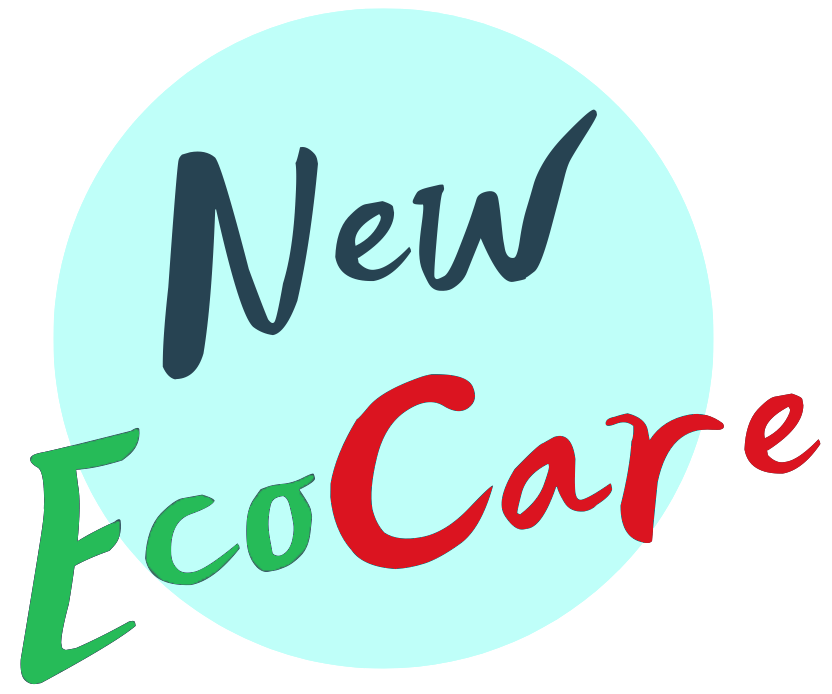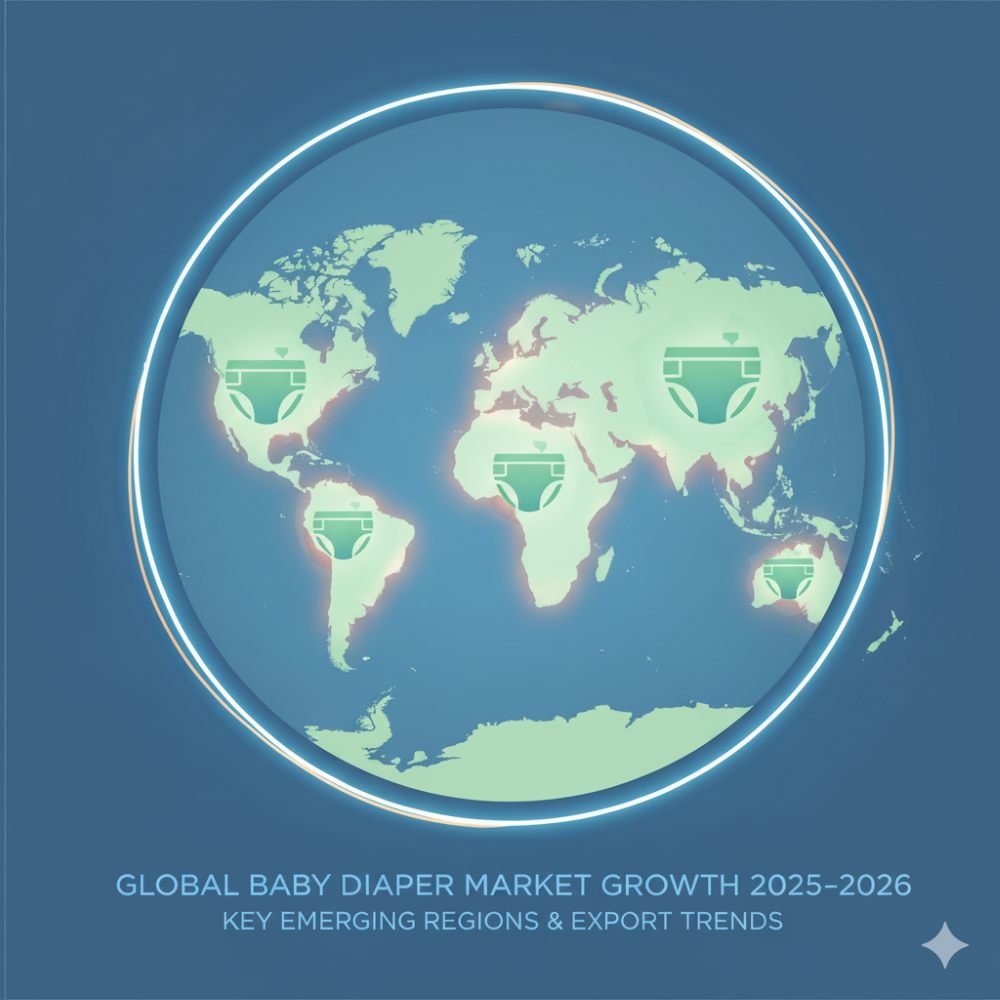The baby diaper market continues to show strong momentum heading into 2025–2026, driven by rising birth rates in certain regions, higher disposable incomes, and an expanding awareness of hygiene and baby care. Despite challenges such as raw material fluctuations and sustainability pressures, the global market remains vibrant, with growing export opportunities for manufacturers and brand owners alike.
As a professional OEM and private label diaper manufacturer, New EcoCare has observed several regional shifts that are creating new opportunities for both established brands and newcomers in the baby diaper business. Below, we explore key regions showing the strongest growth, as well as insights into how B2B buyers can position themselves to meet this evolving demand.
Table of Contents
1. Global Market Overview: Where Growth Is Coming From
According to industry forecasts, the global baby diaper market is projected to exceed USD 90 billion by 2026, with a compound annual growth rate (CAGR) of around 4–5%. This steady growth is fueled by several factors:
Urbanization and dual-income households driving demand for convenience products.
Greater hygiene awareness in developing regions.
Premiumization of baby care products, as parents increasingly seek high-quality, eco-friendly diapers.
Expansion of e-commerce and cross-border trade, enabling smaller brands to reach global customers faster.
The most significant export and sales opportunities for the next two years are concentrated in Asia-Pacific, the Middle East, Africa, and Latin America—regions where modern retail infrastructure and consumer purchasing power are catching up rapidly with Western markets.
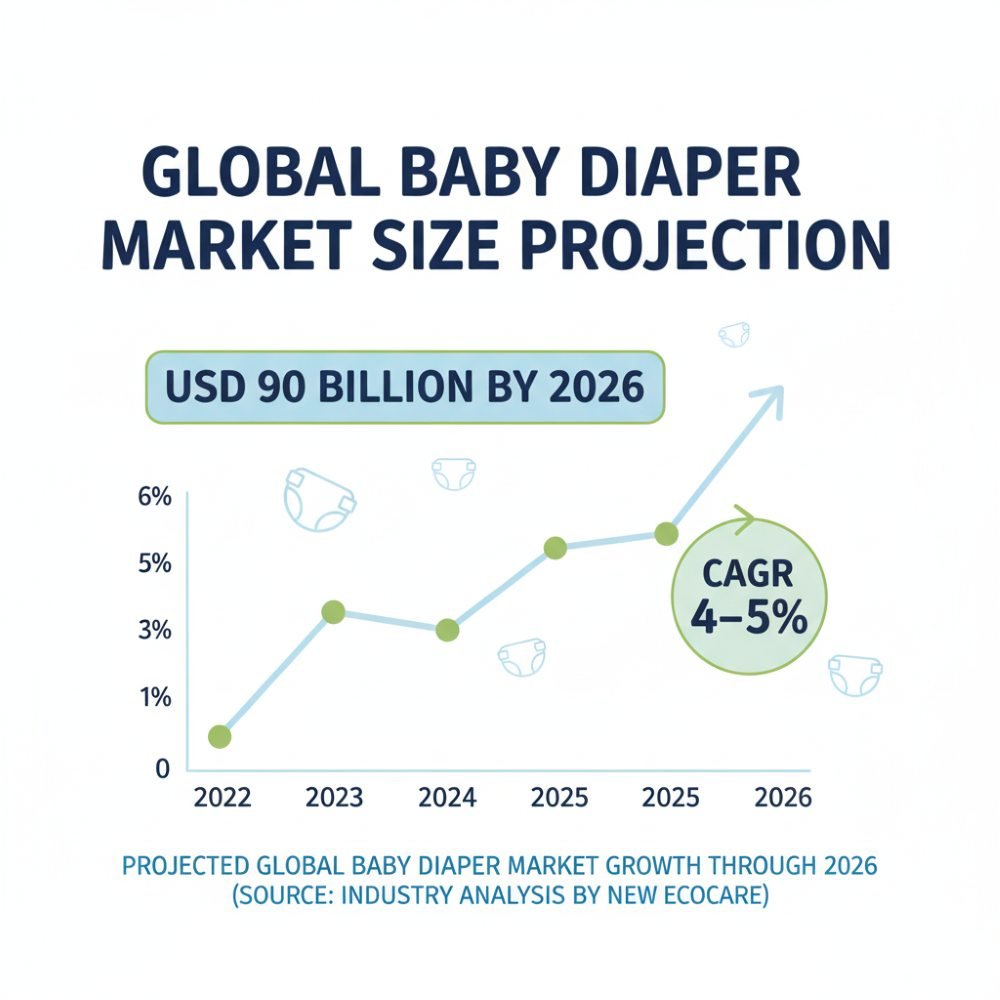
2. Asia-Pacific: The Most Dynamic Growth Engine
The Asia-Pacific region continues to be the largest and fastest-growing market for baby diapers, accounting for nearly half of global consumption.
Southeast Asia, led by Indonesia, Vietnam, and the Philippines, is showing double-digit annual growth. The market here is dominated by mid-range diapers, offering a balance of quality and affordability.
India is another promising market, where disposable diaper penetration remains below 30%. As awareness rises, this represents huge untapped potential for importers and distributors.
China, while already mature, continues to demand premium and eco-friendly diaper options—especially from brands promoting sustainable materials like bamboo or biodegradable polymers.
For OEM and private label buyers, Asia offers flexibility in market positioning. For example, New EcoCare supports partners in customizing products for both premium eco-conscious brands and value-driven retailers, tailoring material selections, packaging, and absorption performance to local consumer expectations.
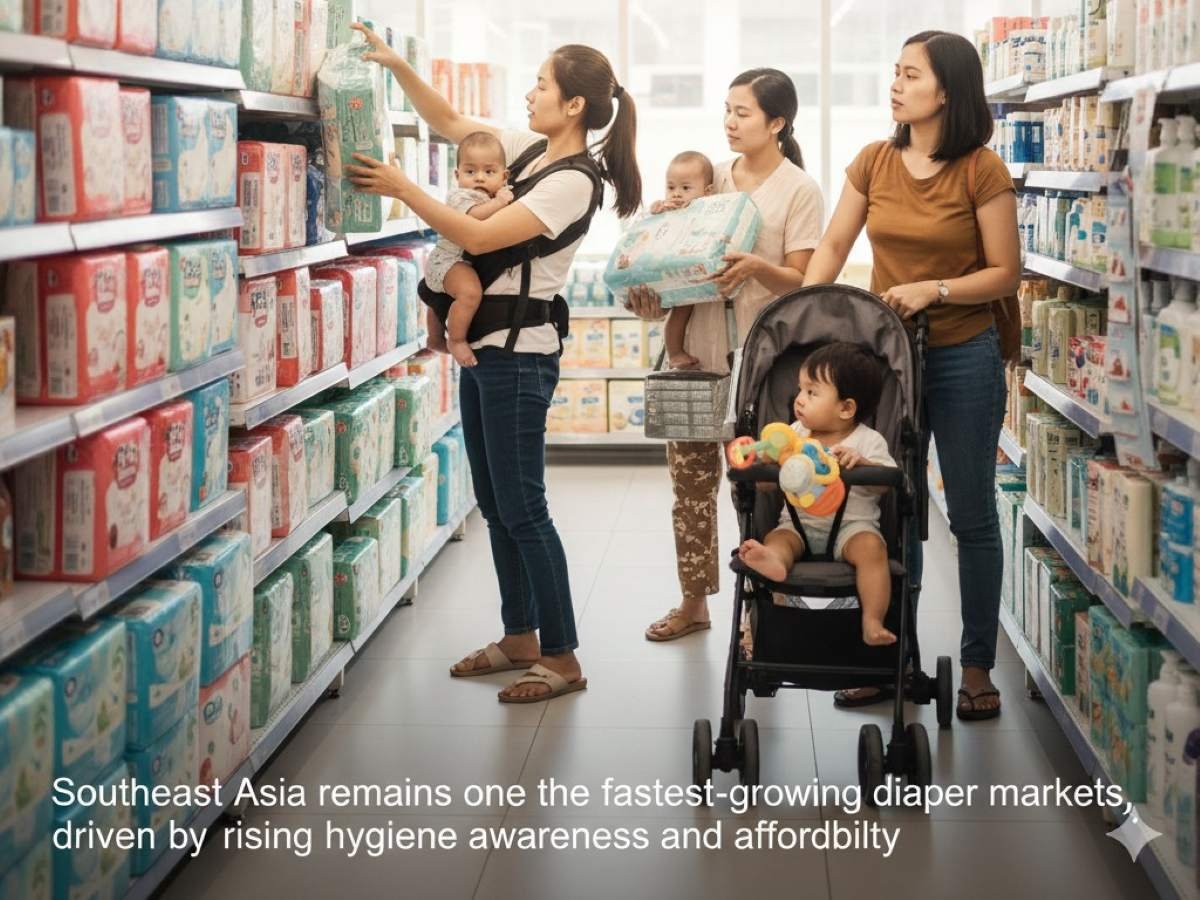
3. The Middle East and North Africa: Expanding Distribution Networks
In the Middle East and North Africa (MENA), rising population and improved retail infrastructure are creating strong import opportunities. Countries like Saudi Arabia, the UAE, and Egypt are investing in modern distribution systems, while young families continue to prioritize baby hygiene products.
Private label demand is also growing as regional retailers seek to build affordable in-house brands. At the same time, government quality regulations are tightening, which increases demand for reliable OEM suppliers with proven compliance capabilities.
At New EcoCare, we have seen more clients from MENA markets requesting customized packaging in Arabic, halal-compliant production, and specific moisture barrier requirements suited for hot, humid climates—highlighting the importance of regional adaptation in diaper manufacturing.
4. Africa: A Rising Frontier for Long-Term Growth
Africa remains one of the most exciting emerging regions for baby diaper exports. With its young population and fast urbanization, demand for disposable diapers is expected to grow more than 7% annually through 2026.
Key countries like Nigeria, Kenya, and South Africa are driving this expansion, supported by improving import channels and local retail chains. However, affordability remains the key purchasing factor.
For brands targeting African markets, cost-efficient yet reliable diaper production is essential. New EcoCare’s OEM partners often opt for economy line diapers with simplified packaging and effective core materials, maintaining strong absorbency while meeting local price points. Our team helps clients design customized packaging and product configurations optimized for cost performance in these fast-growing markets.
5. Latin America: Opportunities in Local Brand Expansion
Latin America—particularly Brazil, Mexico, and Chile—represents another vibrant region for diaper exporters. Economic recovery and middle-class expansion are fueling interest in both premium and eco-friendly diapers.
Local private labels are also becoming increasingly competitive. Retailers and distributors are seeking reliable Chinese OEM suppliers who can offer both quality consistency and short lead times.
For example, New EcoCare’s “45-day quick-start” OEM program has been particularly attractive for Latin American clients who want to launch or relaunch diaper brands quickly, from design to packaging to full-scale production.
6. Europe and North America: Focus on Sustainability and Niche Brands
Although the European and North American markets are relatively mature, opportunities remain for niche brands, especially in the eco and sustainable diaper segment.
Consumers in these regions increasingly demand biodegradable and bamboo-based diapers, which has opened the door for innovative small and mid-sized brands. Many of these companies prefer OEM partnerships with factories in China that can offer FSC-certified bamboo materials, plant-based liners, and biodegradable film solutions.
New EcoCare supports such brands with custom formulations using renewable materials while ensuring international quality certifications such as ISO, CE, and SGS. This allows our partners to compete effectively in sustainability-driven markets.
7. The Growing Importance of Private Label and OEM Manufacturing
Globally, private label baby diaper brands are gaining popularity. Retailers, wholesalers, and even e-commerce sellers increasingly recognize the profitability of launching their own diaper lines rather than reselling established brands.
OEM manufacturers like New EcoCare enable this growth by offering:
Flexible MOQs (minimum order quantities) for market testing.
Custom branding and packaging design services.
Material customization, from standard SAP fluff cores to biodegradable bamboo options.
Strict quality control and international certifications.
Efficient production timelines and logistics support.
These advantages help new entrants establish strong market identities while keeping production scalable and cost-effective.
8. How B2B Buyers Can Capture Opportunities in 2025–2026
As the global diaper market evolves, B2B buyers should focus on three strategic areas:
a. Identify the Right Market Fit
Understand your target region’s purchasing power, preferences (eco-friendly vs. economy), and product standards. For instance, breathable diaper backsheets are preferred in tropical regions, while extra-thick absorbent cores suit colder climates.
b. Choose the Right Manufacturing Partner
An experienced OEM supplier ensures stable production and compliance. At New EcoCare, we collaborate closely with clients from concept to packaging, helping them translate market trends into competitive products.
c. Build Long-Term Brand Value
Even in fast-growing markets, long-term success depends on trust and consistency. Focusing on stable quality, reliable supply, and clear product differentiation will help brands gain loyalty across import channels.
9. Export Trends and Trade Considerations
As global logistics continue to normalize post-pandemic, diaper exporters can expect more stable freight rates in 2025–2026. However, rising sustainability regulations may affect export packaging and labeling standards.
To stay competitive, brands should collaborate with manufacturers experienced in customs documentation, certification management, and multilingual packaging compliance. New EcoCare’s international export team supports partners with region-specific documentation and regulatory guidance, helping clients minimize trade risks and shorten time-to-market.
10. Looking Ahead: Innovation and Sustainability
Sustainability remains a major theme in the global diaper market’s evolution. From bamboo topsheets and compostable packaging to water-based inks and reduced-plastic cores, innovation is rapidly transforming how diapers are produced and perceived.
New EcoCare continues to invest in eco-friendly diaper development, leveraging advanced absorbent core technology, biodegradable materials, and recyclable packaging options. As environmental awareness grows globally, we believe that sustainable OEM manufacturing will define the next chapter of the baby diaper industry.
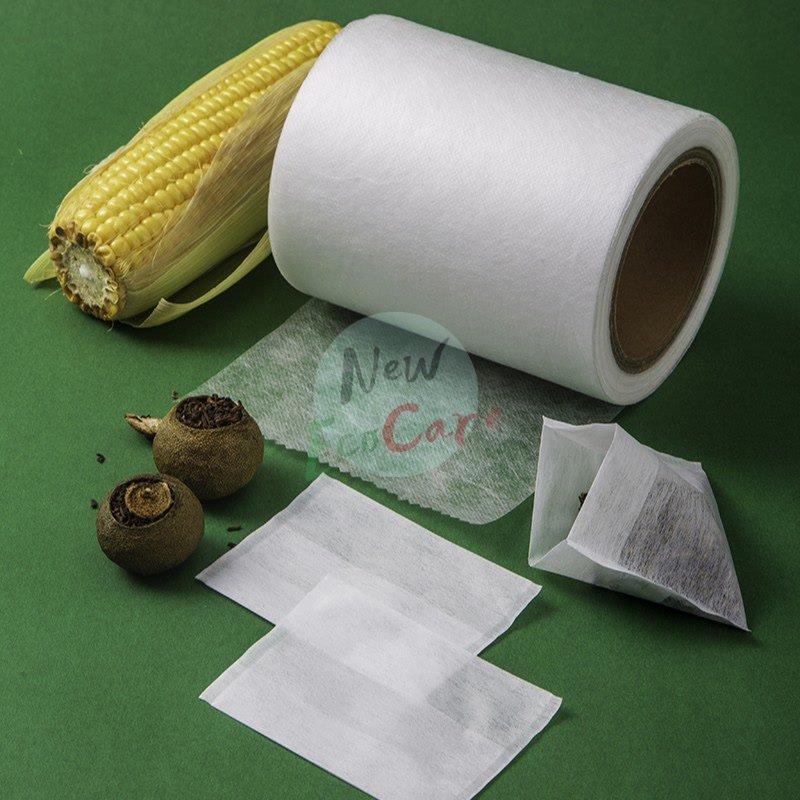
Conclusion
The global baby diaper market in 2025–2026 offers significant opportunities for both established importers and new entrants. Growth in Asia, Africa, the Middle East, and Latin America—combined with sustainability-driven demand in Europe and North America—presents a diverse landscape of possibilities.
For B2B buyers, success will depend on understanding local market dynamics and partnering with experienced OEM suppliers who can deliver flexibility, quality, and innovation.
At Xiamen New EcoCare Co., Ltd., we are proud to support global partners in developing their private label diaper brands with efficiency, transparency, and industry expertise. Whether you are launching a new brand or expanding your existing portfolio, we are here to help you capture the next wave of growth in the global baby diaper market.
